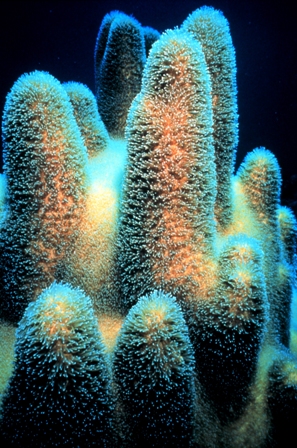- Series:Animals, Plants, Transcript English
2 Peter 3:4
“And saying, Where is the promise of his coming? for since the fathers fell asleep, all things continue as [they were] from the beginning of the creation.”
Many people know that, despite its appearance, coral is actually a tiny animal. Even a small coral growth may be made up of billions of tiny animals, each living inside its limestone skeleton.
What many people don’t know is that coral cannot live without the help of algae – a plant.  Thousands of one-celled algae live in the tiny stomach of each coral polyp. The polyp requires the waste products of the algae to complete its nutrition requirements and to get the calcium with which it builds reefs. In return, the polyp’s stomach provides an ideal protected living place for the algae. Incidentally, the wonderful colors in living coral come from the algae in each polyp’s stomach.
Thousands of one-celled algae live in the tiny stomach of each coral polyp. The polyp requires the waste products of the algae to complete its nutrition requirements and to get the calcium with which it builds reefs. In return, the polyp’s stomach provides an ideal protected living place for the algae. Incidentally, the wonderful colors in living coral come from the algae in each polyp’s stomach.
Evolutionists have said that it must take millions of years for the tiny polyps to build large coral reefs – like the 2,000-kilometer-long Great Barrier Reef in Australia. The Great Barrier Reef, incidentally, is considered the largest structure ever built by living organisms. However, it has now been shown that coral polyps can double their own weight in just over 10 days! As a result, the claim of millions of years for the age of the Great Barrier Reef has been reduced by a factor of 40!
Many of the long-age figures claimed by evolutionists have had to be drastically revised downward as we have learned more about the creation. The resulting figures fit the Bible’s account of history much more closely.
Prayer:
Father, I thank You that as our knowledge of Your creation grows, Your Word is being vindicated from the charges that it is in error. I pray that this would serve as a witness to bring more people to Jesus Christ. Amen.
Notes:
Langreth, R.N. 1990. “Bleached reefs.” Science News, v. 138, Dec. 8. p. 364.
Chen, I. 1990. “Great Barrier Reef: A youngster to the core.” Science News, v. 138, Dec. 8. p. 364.
